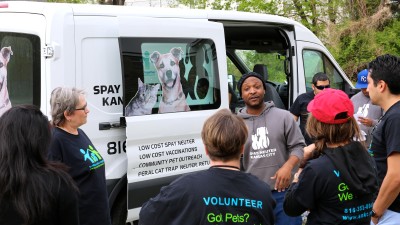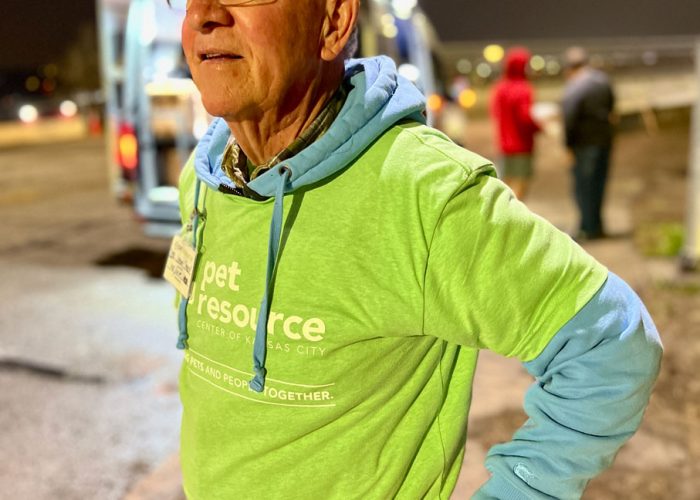 Pet Resource Center of Kansas City is the only targeted spay/neuter program in the greater Kansas City area. What does that mean and why does it matter?
Pet Resource Center of Kansas City is the only targeted spay/neuter program in the greater Kansas City area. What does that mean and why does it matter?
Back when we were revamping our outreach program a couple of years ago we started looking at some data. And it turns out that about 80% of animal control calls come from 12 zip codes in KC’s urban core. That’s a lot of calls coming from a relatively small area. Our approach to spay/neuter is to reach out to those areas first. They’re what we call underserved communities, or communities whose need for services far outweighs the amount of services they receive or are available to them. If you think of social welfare as a balance of supply and demand, these areas are all out of whack. Why is that?
Well, underserved communities usually have a few different issues at play:
- Economic depression
- Social isolation
- Mistrust
When we talk about an area being economically depressed, we’re saying that there aren’t enough resources to go around. That’s easy enough. These areas are less likely to see any kind of economic development or investment, meaning that the value of the community, as its buildings and infrastructure decline physically, is going to sink lower and lower. This gives poverty a greater and greater foothold, making it less likely for the neighborhood to grow without significant heavy lifting. This is a trap there is sometimes no way out of; in neighborhoods that are better off, residents can pool their resources to enact social or developmental change, but in economically depressed areas, the residents are busy just trying to get by. Add in sociological barriers, like prejudice, and you begin to see the weight of the problem.
Social isolation comes from economic depression, to some extent. Those areas of town that people won’t go to, that are “dangerous,” that are “scary,” etc., become areas avoided by those most able to actually effect change. Even if there are great changes happening in a city, and wonderful growth, these areas see virtually none of it. From the main course of the river, these tributaries and eddies branch off and go nowhere. It creates a feeling within a community that they truly are alone, that nobody cares about them. And the longer those communities are isolated, the greater that feeling becomes. In addition, as we’ve found in Kansas City, Kansas, cultural and language barriers can also create a kind of social isolation from the larger social group.
This leads us pretty well straight into mistrust. The people who live in economically depressed, socially isolated areas know that they’re ignored, they know they’re considered a “dangerous” area. That’s a label that affects the people who live in those neighborhoods. So when an outreach group first enters an underserved area, they may not be taken seriously. “What do you want?” or “What’s the catch?” are common questions we get. They aren’t used to people genuinely offering help. Or worse, some other group has been there and brought nothing but judgment to the table. One of the things we come up against on a regular basis is the type of damage that outreach groups have done in the past. Whether it’s judging people for a lack of means or stereotypes about certain segments of the population, judgment breeds mistrust of outreach groups. The attitude becomes, Yes, I want help, but at what cost? The cost of my dignity as a human being? Pride becomes a very strong barrier in these situations.
The point of outreach is to build relationships, plain and simple. Help is good, and providing help is obviously a part of the process, but the larger goal is to build a relationship with a community that’s used to being ignored, to lead by example and show that together we can make a difference, even in areas where problems seem insurmountable. It’s an approach that’s helped us grow over the fourteen years we’ve been in business, from a small clinic with one doctor, to a larger, fully-staffed clinic (and a second location, too!), a Pet Food Pantry, homeless outreach, and a dedicated, amazing group of employees, volunteers, and supporters who understand what it means to build relationships.
